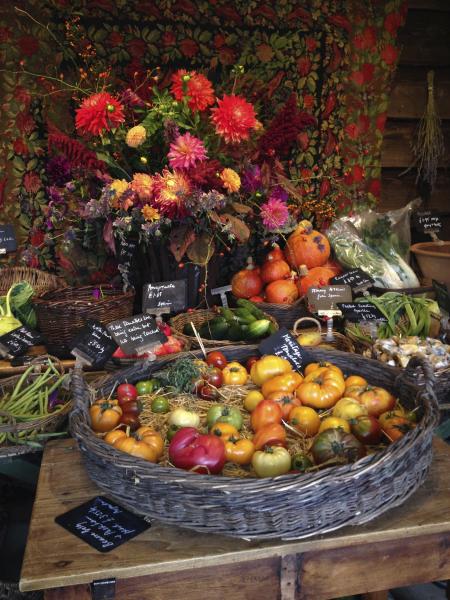 Port Meadow is where I used to pick bushelfuls of mushrooms for breakfast in the Autumn- you just have to get there at 5 am before the other foragers. Horses in the milky mist, round white buttons under cowpats, a heron sillhouetted against a thumbprint of moon, the ghost of the airman skirting the ancient burial mounds…
Port Meadow is where I used to pick bushelfuls of mushrooms for breakfast in the Autumn- you just have to get there at 5 am before the other foragers. Horses in the milky mist, round white buttons under cowpats, a heron sillhouetted against a thumbprint of moon, the ghost of the airman skirting the ancient burial mounds…
I’ve caught my breath more than once- the most memorable miracle (never properly explained by any scientist that I’ve asked) of the entire, vast, entirety of green transmogrified into pockets of flame where each hoof mark from grazing cattle glowed and shimmered with unearthly combustion. There was no one else there and only 15 years ago it was a place of stillness and peace.
Port Meadow is where Gerard Manley Hopkins mourned his Binsey Poplars:
My aspens dear, whose airy cages quelled,
Quelled or quenched in leaves the leaping sun,
All felled, felled, are all felled;
Of a fresh and following folded rank
Not spared, not one….
Oh if we knew what we do
When we delve or hew- Hack or rack the growing green!

Well, the poplars were planted again and grew and one of the loveliest walks is a pilgrimage to St Margaret’s Well, over by the tiny village of Binsey, or to Godstow Abbey undoubtedly haunted by Henry 11nd’s mistress, Fair Rosamund, then back to Medley Manor Farm to pick strawberries, asparagus, raspberries, currants, gooseberries.
But the University of the dreaming spires has sanctioned seven blocks of flats (meant for the overseas students from the Far East and elsewhere) who can pay the hefty fees and fill their coffers.
Will these hideous apologies for architecture now have to be pulled down, or reduced in height, so the walker is left to dream among the buttercups and grazing cattle?
Watch this space.
The meadow is an ancient area of grazing land, still used for horses and cattle, and has never been ploughed. In return for helping to defend the kingdom against the marauding Danes, the Freemen of Oxford were given the 300 acres (120 ha) of pasture next to the River Thames by Alfred the Great who founded the city in the 10th century. The Freemen’s collective right to graze their animals free of charge is recorded in the Domesday Book of 1086 and has been exercised ever since.
The River Thames (known as the Isis at this point) flows through this large grazing meadow. This is where the Reverend Charles Dodgson (aka Lewis Carroll) rowed in a boat on July 4, 1862 up the river with three young girls — Lorina, Alice, and Edith Liddell. While journeying slowly from near Folly Bridge to near Godstow, Dodgson began at their request to make up a story that has enthralled so many generations since then.
Because the meadow has never been ploughed, it contains well preserved archaeological remains, some of which survive as residual earthworks.

Yesterday I delivered leaflets urging the residents of a neighbouring street to join in the campaign to save Port Meadow.
The day before that campaigners stood on the steps of the Town Hall politely barracking Oxford City Councillors as they scurried into their chamber, most of them avoiding our gaze.
From 2012, the Oxford University Estates Directorate have been developing the one-hectare site between the Cripley Meadow Allotments and the railway tracks, close to the southern end of Port Meadow, as extensive student accommodation. The development has been controversial, since the four to five storey blocks overlook Port Meadow.
Concern has been raised by the Oxford Preservation Trust and the Green Party- but the barracks are already up and awaiting the new batch of post-grads in the Autumn.
Many members of Oxford University are incensed and the development has been likened to building a “skyscraper beside Stonehenge”. In February 2013, Oxford City Council entered negotiations with Oxford University to reduce the height of the buildings by two storeys. Last month the Campaign to Protect Rural England applied to the High Court for judicial review of the decision to grant planning permission. The buildings are up for winning the most hideous carbuncle of the year and rumour says they have attracted the most nominations.
Good old Oxford City Council! Hurray for Oxford University!
Here is a link to the latest new about this vandalism, a report in the Sunday Times (1.2.2015)






























